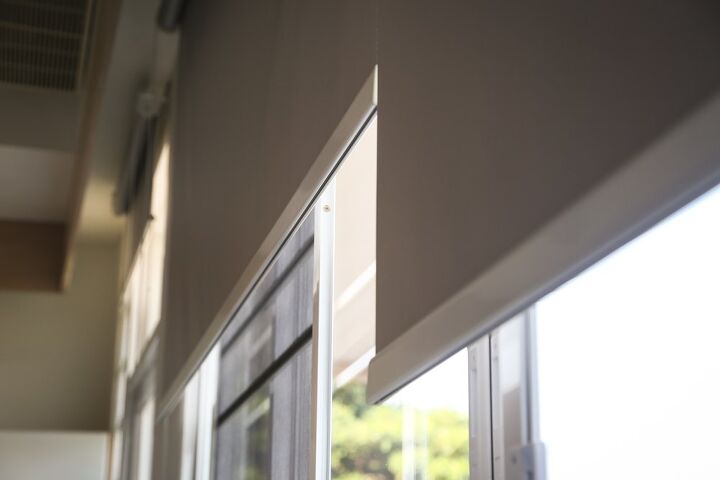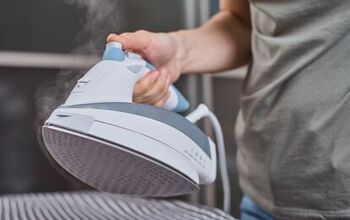Can You Wash Blackout Curtains? (Find Out Now!)

Whether the blackout curtains are custom-made or you purchased them from a local retail store, figuring out how to properly clean them can be a struggle. So, with that said, “can you wash blackout curtains?”
In short, yes, you can wash blackout curtains. However, since blackout curtains have triple lining to defend against the light from outside and many have a rubber or foam coating on the back, they cannot simply be thrown in your washing machine. Instead, they must be cleaned using specific methods, such as spot cleaning with a mild detergent, steam cleaning, dusting with a feather duster and vacuum, and deep cleaning with soapy water.
Continue reading to learn more about the correct way to care for blackout curtains in a way that preserves their integrity and keeps them looking great for many years to come.
Do You Need a Maid Service?
Get free, zero-commitment quotes from pro contractors near you.

What Are Blackout Curtains?
Blackout curtains are a type of curtain that are designed to completely block sunlight from entering a room, regardless of the time of day. Their construction varies, but most blackout curtains consist of a fabric front and a thick coating on the back that creates a solid barrier to block out the light. These curtains are an excellent choice for nurseries, media rooms, bedrooms, and are commonly seen in hospital and hotel rooms.
Because of the material’s density, blackout curtains can also be used to save energy. They can provide insulation against cold and heat from the outside, while also keeping air conditioning or heat trapped inside your home.
Can You Wash Blackout Curtains?
When it comes to washing blackout curtains, you should always read the care label first. This is the case with all types of curtains, but especially the blackout variety. Some may indicate that they are dry clean only, and others may recommend that you don’t completely immerse the material in water.
Regardless, in most cases, you can wash blackout curtains. However, you can’t just toss them in your washing machine and expect it to get the job done. The method for washing blackout curtains ultimately depends on the material it is made out of. While some have a thick rubber or foam coating on the back, others do not and are made of a woven triple weave fabric.
Washing Blackout Curtains by Material
There are two main types of construction used to make blackout curtains, each of which require unique cleaning methods:
- Woven Triple Weave Fabrics – these types of blackout curtains are soft, drapey, and have no coating on the back side. They are made with high-density threading that is tightly woven, meaning you can place them in a front-loading washing machine on a gentle setting. Front loaders are ideal since the agitator in the center of traditional machines will twist and cause damage to the fabric.
- Foam Coated Fabrics – these curtains consist of a white or grey foam (or rubber) coating on the back side. Because of this, they cannot be soaked in water. Instead, the best method is spot cleaning and then dry cleaning. Though, if you prefer to wash them yourself, you’ll want to hand wash using a mild detergent, gently wring out excess water, and line dry them immediately.
Do You Need a Maid Service?
Get free, zero-commitment quotes from pro contractors near you.

Cleaning Blackout Curtains: Four Simple Methods
Although you should always consult the care label and consider the fabric your blackout curtains are made out of, any of the following methods can be used to clean your curtains:
1. Dusting & Vacuuming
Dusting and vacuuming your blackout curtains are excellent ways to keep them looking fresh in between deep cleanings. This method also helps remove visible pet hair and dust from the fabric.
- Begin by stretching out the curtain on the rod so the entire panel is visible.
- Use a feather duster in back and forth motions to dust the entire surface of the curtain. Then, repeat on the opposite side of the panel.
- Then, use a vacuum hose with a soft-bristle brush attachment or small handheld vacuum to remove excess dust from the curtain surface.
- For pesky pet hair that clings to the fabric, try using a lint roller or the very popular ChomChom Roller.
2. Spot Cleaning
If dusting and vacuuming doesn’t yield the desired results, your next option is to spot clean with warm water and a mild detergent. We highly advise testing the detergent in an inconspicuous spot first to ensure that you don’t damage the fabric. Don’t use any detergent that has bleach or harsh chemicals, as these ingredients can change the fabric color. The color of the detergent could also leave marks on light-colored blackout curtains, so opt for one that is free of dyes.
Simply dip a clean sponge or cloth in a bowl of warm soapy water, wring it out, and blot the stains on the curtains. Rinse quickly before the detergent has had time to harden. For curtains with synthetic backing, you can give the back a brief wipe down.
3. Steam Cleaning
Assuming you own a steam cleaner, this can be a very quick, easy, and effective way to clean blackout curtains.
- Add clean, warm water to the tank of your steam cleaner.
- Use the steam wand and upholstery attachment to clean your blackout curtains, starting at the top and working your way down. Hold the wand a few inches away from the fabric to prevent damage and saturation.
- Move slowly and steam clean both side until you’ve covered all panels.
4. Deep Cleaning
On occasion, it may be necessary to deep clean your blackout curtains. In this case, you’ll want to remove the curtains from the rods and shake them out to remove any dirt or dust. Fill up your bathtub or a large sink with warm, soapy water. Place your blackout curtains in the water, making sure that they are fully submerged.
Gently swirl the curtains around inside the water. Then, wipe or rub down the coating on the back with a soft cloth or sponge. Drain the water and rinse the curtains twice with cold, clean water to remove excess soap. Finally, gently wring out as much water as possible and hang the curtains to dry.
Note: Do not perform this method if the material of your blackout curtains cannot be completely submerged.

Jessica considers herself a home improvement and design enthusiast. She grew up surrounded by constant home improvement projects and owes most of what she knows to helping her dad renovate her childhood home. Being a Los Angeles resident, Jessica spends a lot of her time looking for her next DIY project and sharing her love for home design.
More by Jessica Stone
























![How To Reset A Whirlpool Cabrio Washer [In 5 Easy Steps!]](https://cdn-fastly.upgradedhome.com/media/2023/07/31/9076531/how-to-reset-a-whirlpool-cabrio-washer-in-5-easy-steps.jpg?size=350x220)


